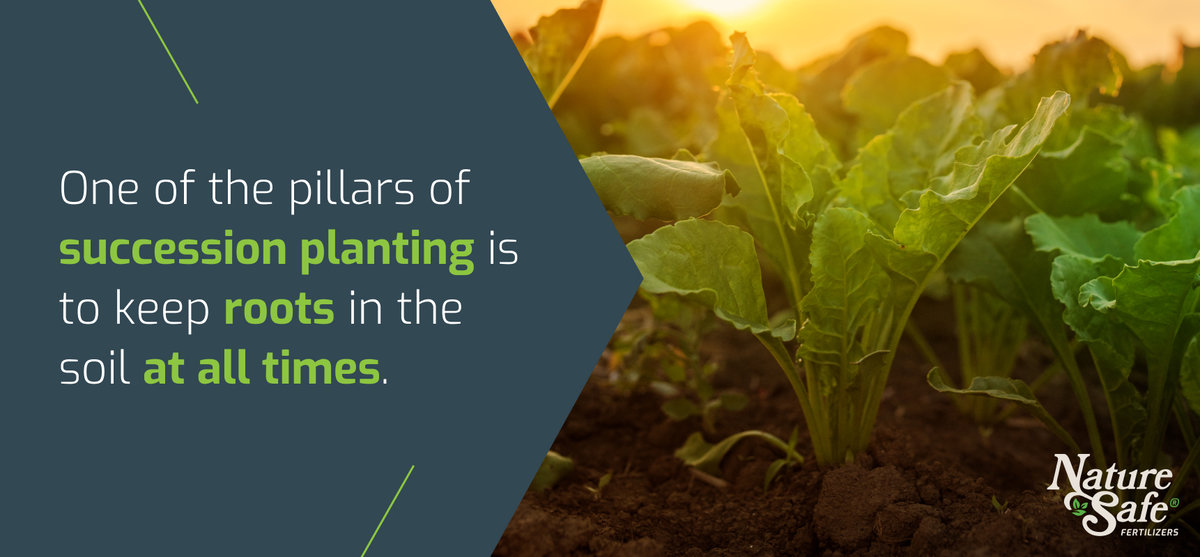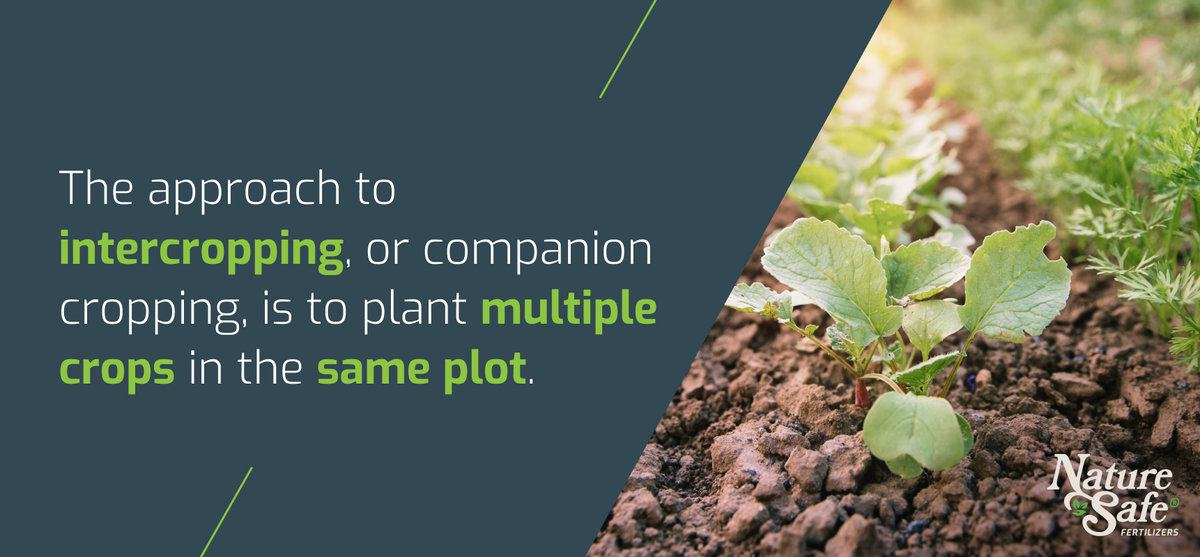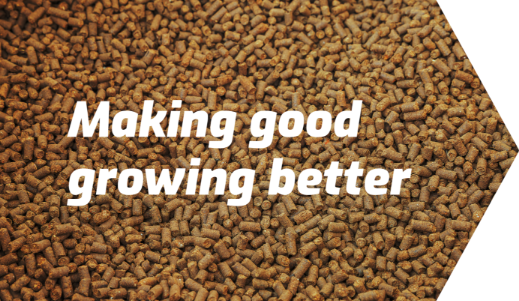
The Complete Guide to Succession Planting
- Posted: Oct 13, 2022
- Author: Nature Safe Fertilizers
- Crop
What Exactly is Succession Planting?
A lot of growers already plant in succession. From home gardeners to small farms, it’s a great way to keep the ground fertile and your fields always working for you.
There are a few different methods, but they all boil down to the principle of constantly having a crop planted. Instead of a farmer having one big harvest, succession planting leads to more frequent and diversified harvests.
It All Comes Back to Regenerative Agriculture
If succession planting sounds a little like regenerative agriculture, that’s because it is. One of the pillars of this sustainable agriculture philosophy is to keep roots in the soil at all times. Resting the soil can deplete the vital vitamins and minerals that crops and the microorganisms in the soil need to survive.
Having crops, bugs, fungi, and microbes in the soil create a thriving ecosystem. Without anything planted, the ecosystem is at risk of collapsing, which takes time and usually external inputs to fix.

Methods of Succession Planting
Growers have a few different options when it comes to succession planting. Depending on means and climate, one method might work better for some growers than others.
Relay
Relay planting is probably what most people think about when they think about succession farming. It’s also what many growers currently do.
This method works by planting a crop immediately after harvesting the previous one, without resting the soil. However, there is more strategy behind it than simply replanting.
Relay planting relies on seasonality. In the early spring, sow crops that can flourish in cooler weather. Once that crop is harvested, plant a different species that can tolerate the same type of soil, but prefers the warmer summer weather. From there, you may still have time for another crop that can be harvested in the fall.
Staggering
Staggering is a popular method for fast-growing crops like sweet corn. The method here is to plant small portions of the plot at a given time. A few weeks after the first crops are sown, it’s time to plant that same crop in another vacant portion of land.
Why stagger? Instead of doing one large harvest, you can have several smaller ones. This might be beneficial for growers that sell at farmers markets. They can return and sell their product week after week during market season.
Intercropping
Like relay planting, intercropping occupies the entire field. For this technique, you strategically grow multiple crops at the same time.
The approach to intercropping, or companion cropping, is to plant more than one crop in the same plot. One grows quickly to harvest while the other (one or multiple) continues growing.
Varying rates of growth is part of the strategy of intercropping, but so is planting crops together that occupy different proximities to the soil. This can be an intercropping strategy on its own, as well.
For example, onions are root vegetables that don’t take up much space above ground, while cabbage grows above ground. Often, a crop with significant foliage that likes sunlight can also protect crops with less foliage that prefer partial sun.
Legumes, such as all different types of beans, are popular cover crops due to how much nitrogen they provide. In addition, this nitrogen-fixing ability makes them great companion crops as well.

Why Succession Planting?
Why succession farming? All forms of succession farming fit the mold of one of the primary practices of regenerative agriculture: never letting the soil rest.
Regenerative agriculture is not only a philosophy of sustainability, but active improvement of the soil and the ecosystems surrounding the farm.
When the soil is at its healthiest, full of organic matter and supporting a thriving biome, fewer inputs are needed to keep that fertility optimized. This means in a successful regenerative farm, the need for synthetic, or chemical fertilizers is minimized.
The crops and the organisms in the soil live symbiotically. Remove the roots, and the soil life can weaken.
Succession farming can be an economical option as well. When certain crops are in season and very popular among consumers, you can provide that crop all season. Not only that, but growers can successfully utilize succession farming in multiple plots and fields with many different crops.
It’s a practice that has shown significant success for smaller-scale farms and home growers. However, organic agricultural operations of all sizes can benefit from the various succession planting methods.
Best Crops for Succession Planting
Most row crops and vegetables are successful succession planters. However, as they have studied, agronomists have named some crops their “favorites” for succession planting. This isn’t a complete list, just some of the more popular crops that do very well with this farming method:
Sweet Corn
The popular Midwest idiom “knee high by the Fourth of July” doesn’t always hold. Sweet corn (and even feed corn) is a common crop to stagger.
It does grow fairly quickly, so for an ongoing corn harvest all summer, plant sweet corn approximately every two weeks. This does depend on which variety you choose, and you may need to make adjustments depending on how the corn is growing.
Summer Squash
Another crop that is good for the staggering method is summer squash. We recommend spacing this one out a bit more than corn—about once every three to four weeks.
Radishes and Carrots
Growing radishes and carrots as companion crops works out well due to their differing maturity rates. Though they are both root vegetables, they are successful intercropping options because of how fast radishes grow and how slowly carrots mature.
Radishes can take as little as three weeks to be ready for harvest, whereas carrots take two to two and half months.

Peas and Beans
Not only are roots in the soil important for soil health, but diversifying the crops in that soil is as well. When relay planting, it’s fine to plant the same crop in succession, but it’s better to plant different species.
Peas and pole beans generally have the same needs. Both require a trellis or climbing pole to latch onto as they grow upwards. They both like the same type of well-drained soil.
Peas generally grow quickly and like the cooler, spring weather. Once those are harvested, plant the pole beans, which do better in the heat.
Both of these do well as companions to other crops when intercropping, as they are very efficient at creating nitrogen.
Planning for Successful Succession Planting
Particularly with intercropping and staggering, succession planting takes a fair amount of planning. Many growers create their own spreadsheet or succession planting chart to track the timing of each crop they sow.
From there, it’s about utilizing the knowledge you already have of your crops—the type of soil and nutrients they need, how quickly they produce, and what they take or give back to the soil. Once you have healthy soil, organic farming is much simpler. The soil ecosystem you helped create is fairly self-sustaining.
Getting there can be tricky, especially if you’re making the move from conventional farming. That’s where Nature Safe Fertilizers comes in. Our organic fertilizers are not only environmentally sound, but they’re formulated to meet the nutritional needs of a broad array of crops. Call us today to see how we can help you make good growing better.
